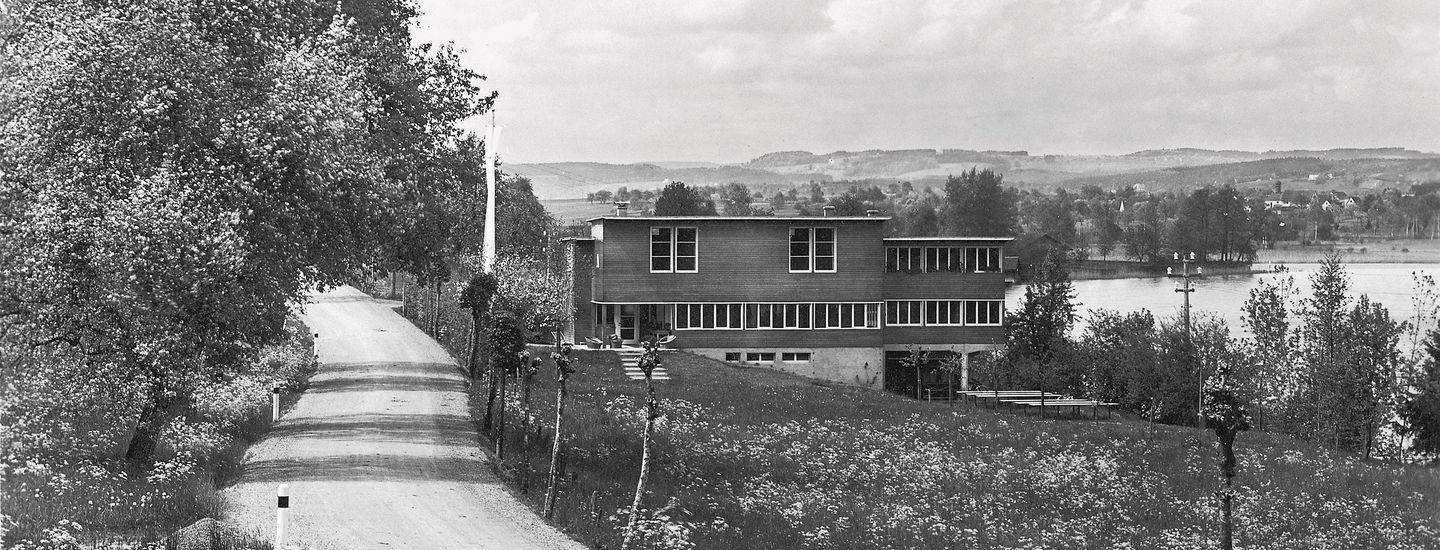
1970 to 1980
Backpackers discover Switzerland
«In 1972, one expects to have a good million of these outwardly so different Americans. Their signature feature is a tall backpack in bright colours. They carry around the book Europe on 5 $ a Day with them, using it as both a bible and a compass. The travel ethos of these masses of budget-conscious travellers from faraway North America is to have as much fun as possible for as little money as possible.»[1]
As cheap as possible
The world seems to be open to everyone, especially the American boys and Canadian girls travelling on a budget, who almost overrun the youth hostels.
From 1970 onwards, the number of overnight stays increases unexpectedly. This is because young backpackers from all over the world are discovering Switzerland. Low-cost charter flights and new youth fares make it possible for young people from the USA to afford completely new travel destinations. They enjoy staying at the modern Wollishofen Youth Hostel, which is easily accessible as the first stop from Zurich Airport and is clearly the «hot spot». According to a report on the television programme Rundschau in August 1972, «every mattress would be occupied» every night. For 4 francs and a membership card, «Rucksack Americans» would even spend the night in the cellar. The rush is so great that some of them even spend the night in the train station until a «jugi bed» or another reasonably priced bed becomes available. They want to travel «in the Alps,» to Lucerne and Interlaken to join the «snowmen,» mountaineers and skiers. Or they also like to stay in Zurich. According to these travellers, they do not speak to Swiss people because of the language barrier. These statements completely contradict the fundamental youth host principle of fostering international understanding. Most of them would be happy to meet someone from their home town in the USA, a member of the SSR student travel service tells the camera with a smile.
From 1972, the new Interrail Pass also makes it possible to travel cheaply. All these new and low-cost transport options, which are tailored to young people, are partly responsible for making the youth hostels more international than ever before. In the 1970s, only around 30% of sleeping accommodation in Swiss Youth Hostels is occupied by locals. The final strongholds of abstinence over the past 50 years are now crumbling. The first smoking rooms are set up and the International Association lifts the alcohol ban in 1978. The latter still exists in Switzerland, as a drinking licence is required to serve alcoholic drinks. In addition to the alcohol tax that needs to be paid, the youth hostels fear a damage to their image, which could lead to the withdrawal of public funds.
The good occupancy figures cannot hide the fact that there is an urgent need for action in the youth hostels. Many properties are suffering from the ravages of time and are in need of renovation or even new construction. Against this backdrop, an ETH study has been commissioned. The authors conclude that a reorganisation must be undertaken and that the individual regional districts must be reorganised and scaled back. However, the planning study also states that there is a great need for non-commercial, affordable accommodation in the youth tourism sector. This is something that proves to be true in the following years. However, it is now a matter of securing the assets and protecting the properties against decisions taken at the general meetings that cannot be assessed in advance. The Zurich Youth Hostels Association finds the solution with the establishment of the Swiss Foundation for Social Tourism in 1973. Property ownership is transferred to the new organisation, which manages the properties and the associated assets. The Zurich Youth Hostels Association can now concentrate fully on operational management and cooperation with the now 13 regional youth hostel organisations. Their merger is also being gradually mapped out for the future. On 11 May 1973, Jakob Kern and Willy Mersiovsky sign the foundation deed on behalf of the Zurich Youth Hostels Association, heralding a new era.
[1] Source: www.youtube.com/watch





Share this page